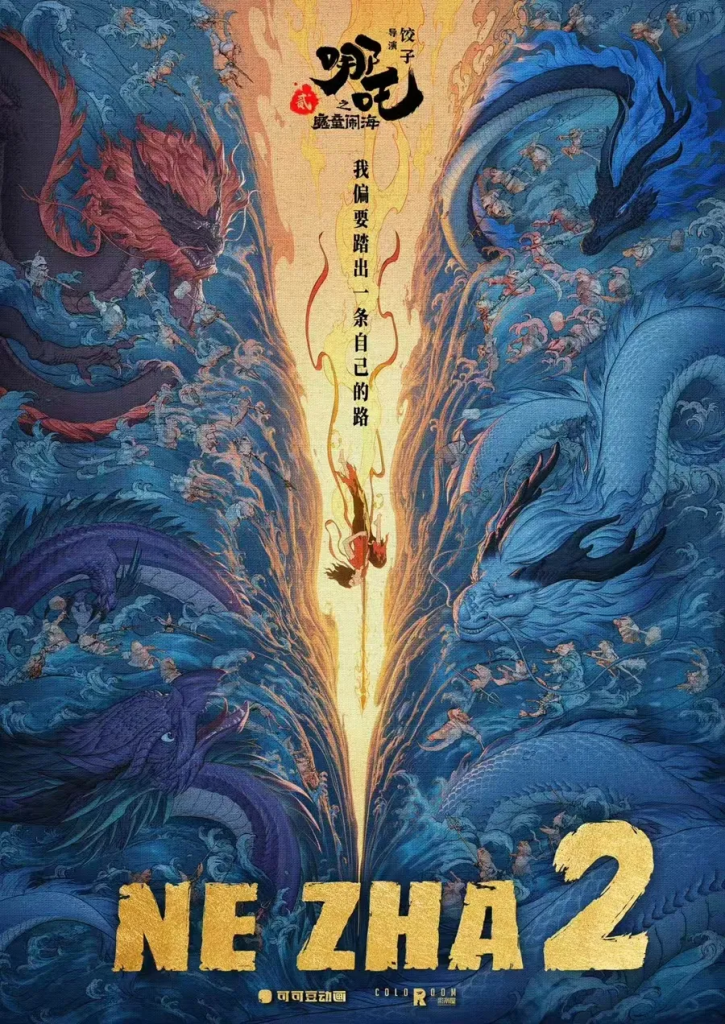Chinese cinema has reached an unprecedented milestone: Ne Zha: The Devil Child has shattered the 10 billion yuan box office threshold, marking a historic moment in the country’s film industry.
As one internet user put it, “This isn’t just climbing the charts—it’s like raising the national flag!” The film’s meteoric rise on global box office leaderboards has not only signified a breakthrough for China’s animation industry, but also reflected the nation’s growing cultural confidence and spirit of innovation.
Globally, crossing the 10 billion mark is a monumental achievement. But beyond the numbers, this is a cultural leap for China.
On a technical level, Ne Zha 2 boasts over 1,900 VFX shots and more than 10,000 special effects elements—on par with top international productions. Behind these figures are the tireless efforts of 138 Chinese animation studios and thousands of animators. This achievement reflects the years of accumulated technical prowess and creative strength within China’s animation industry, showcasing a transformation from imitation to original innovation.

More than a commercial success, this film represents the rise of Chinese culture. It demonstrates the captivating power of traditional Chinese stories enhanced by modern animation technology. The ancient hero figure of Ne Zha has been reborn, infused with new vitality that resonates with both domestic and global audiences. Not only has Ne Zha 2 broken box office records at home, it has also propelled Chinese culture to a more prominent position on the global stage.
The film’s triumph is evident not just in its total earnings, but also in its IMAX performance. Within just 15 days of release, it grossed 562 million yuan in IMAX theaters—surpassing Avengers: Endgame to become the highest-grossing single film in IMAX China history.
This result highlights not only the film’s technical excellence and emotional impact on audiences, but also the Chinese market’s strong demand for high-quality productions.
Such explosive success is no accident. As Xu Yiran, Director of the 3D Animation Department at Shanghai Vancouver Film School, noted, Ne Zha 2’s special effects even surpass international standards. This is a testament not only to the technical capabilities of Chinese animation, but also to the growing global presence of China’s cultural industries.

The rapid development of Chinese cinema and animation is closely tied to China’s progress in cultural and technological spheres—an outcome of the country’s steadily rising comprehensive national strength.
In the global film landscape, Ne Zha 2 is now among the top five films of all time, trailing only blockbusters like Avatar: The Way of Water and Titanic. If projections hold, it may become the highest-grossing animated film in global box office history—opening a new chapter for China’s presence in international cinema.
This is not only a massive leap forward for China’s film industry, but also a powerful victory for Chinese culture.
Ne Zha, a symbol-rich figure in Chinese mythology, has evolved far beyond folklore to become a compelling icon in global pop culture.

As depicted in the film, Ne Zha’s transformation from “devil child” to hero is not just a narrative arc—it’s a metaphor for the rise of Chinese culture in the global arena, reflecting growing confidence and a cultural renaissance.
The success of Ne Zha 2 is part of a broader trend. Since the overseas popularity of Black Myth: Wukong, China’s cultural industry has increasingly caught global attention. From the rise of platforms like Xiaohongshu and AI models like DeepSeek, to the worldwide acclaim of Ne Zha 2, China’s string of breakthroughs in culture and technology is reshaping the world’s perception of the country. These accomplishments are underpinned by China’s ever-growing national strength.
China is no longer a follower in the global film market, nor a bystander in the cultural domain.
With its expanding national power, China’s cultural influence is becoming a force in the global film industry. Ne Zha 2 is a manifestation of cultural confidence and a leap from cultural “export” to cultural “creation.” China is no longer merely imitating—it is participating as a major player in the global cultural arena.

Ne Zha 2 is not only a milestone in Chinese film history—it is a great leap in the country’s cultural renaissance. Through this film, we witness the rise of China’s animation industry and a fresh new face of Chinese culture on the world cinema stage. Chinese film and storytelling are advancing with unstoppable momentum, conveying the spirit of Chinese traditions fused with modern innovation, telling authentic Chinese stories, and amplifying the Chinese voice.
Chinese cinema is proving to the world that culture is not merely soft power—it is a core element of national strength. As Ne Zha declares in the film: “My fate is mine, not heaven’s.” The success of Chinese filmmakers is the truest expression of that belief.



